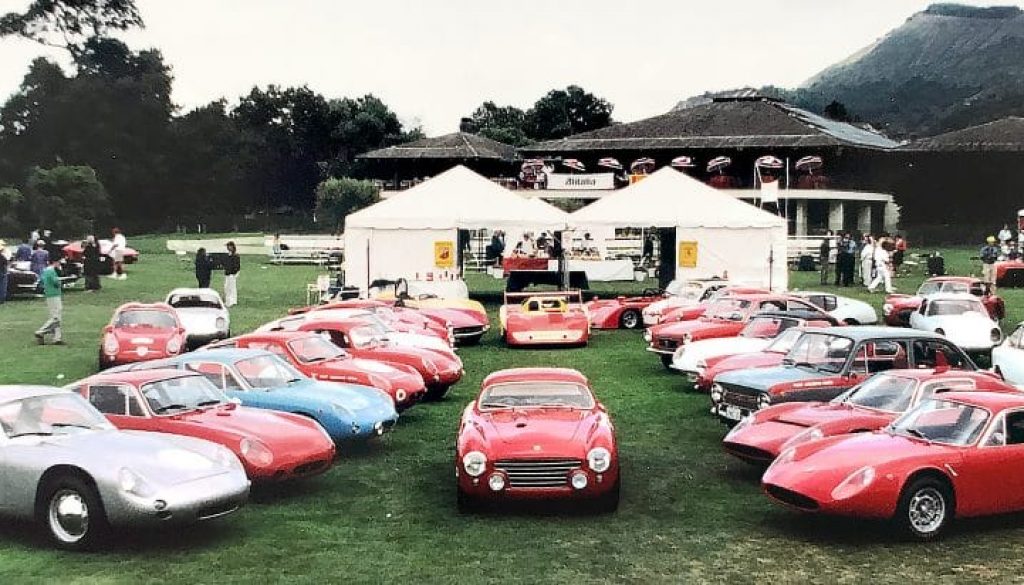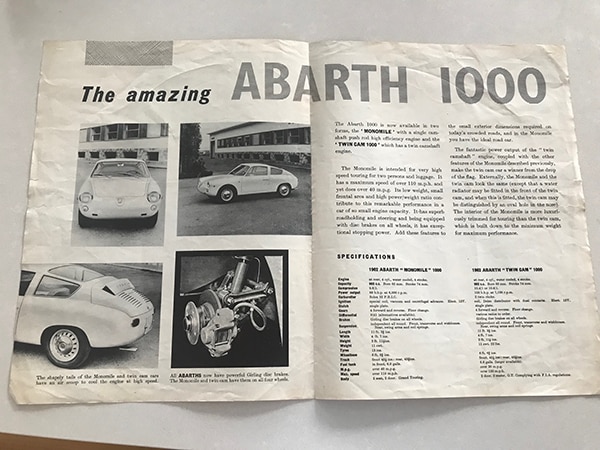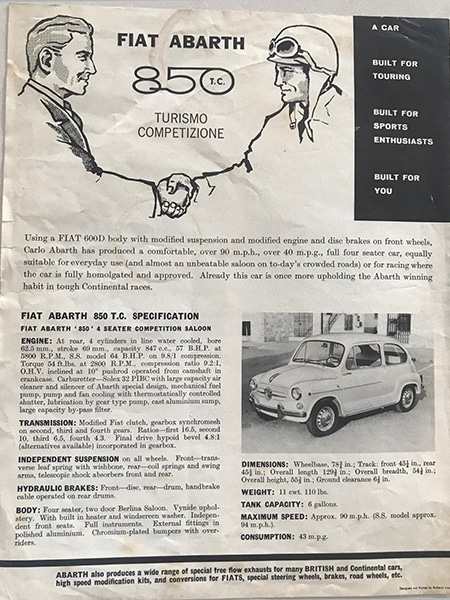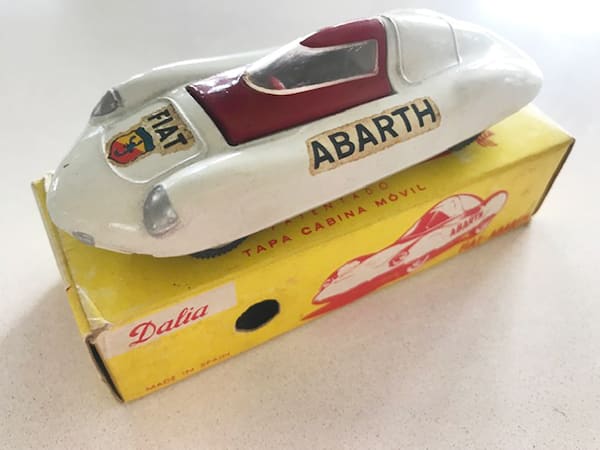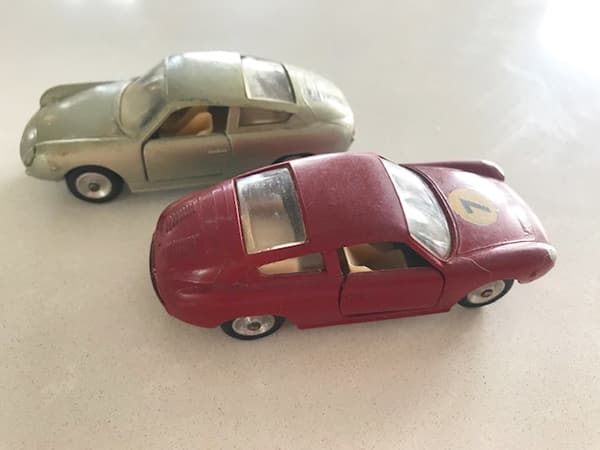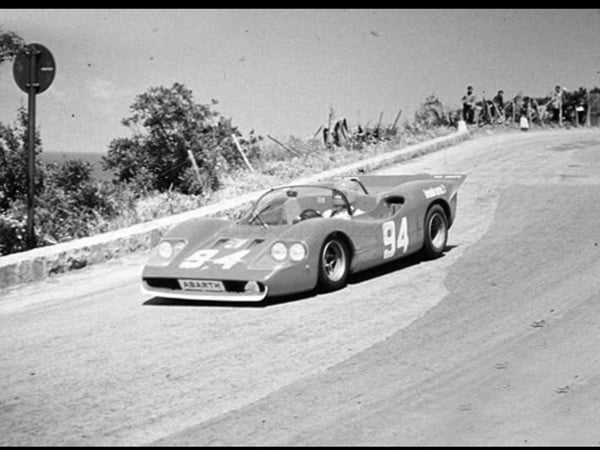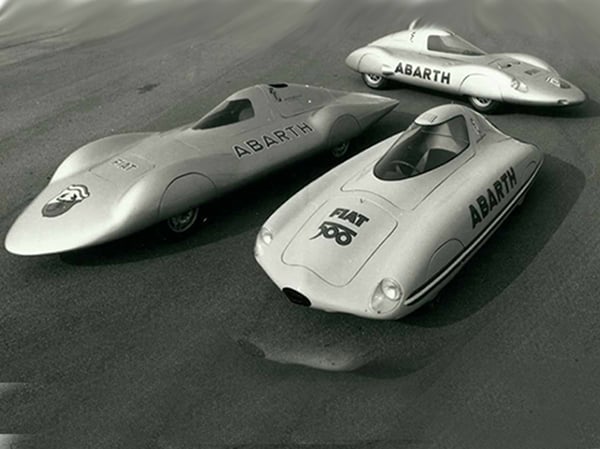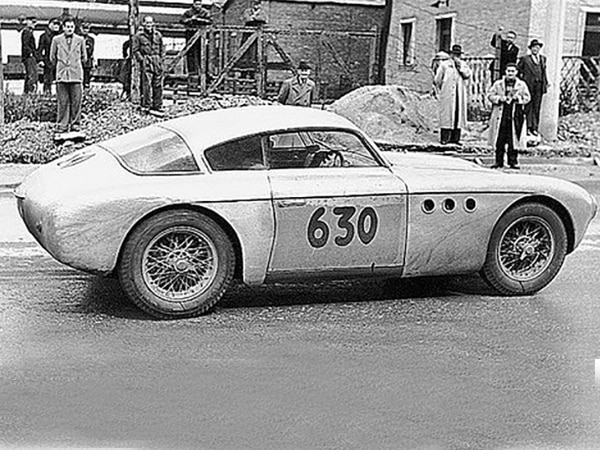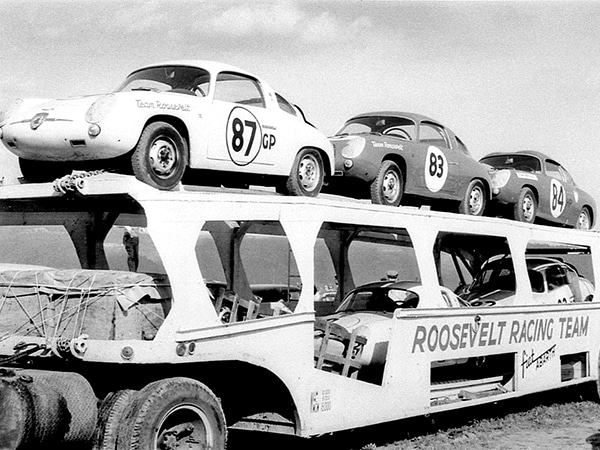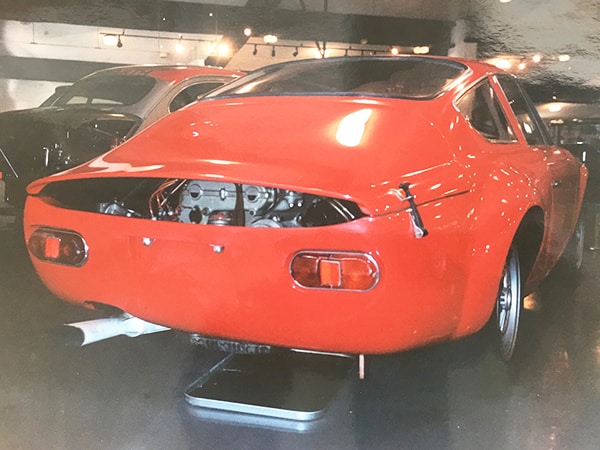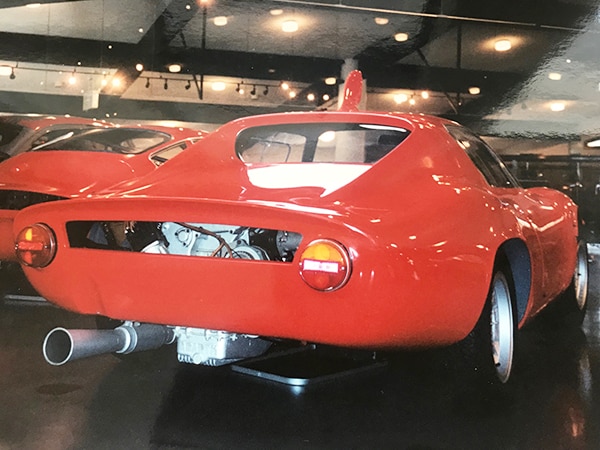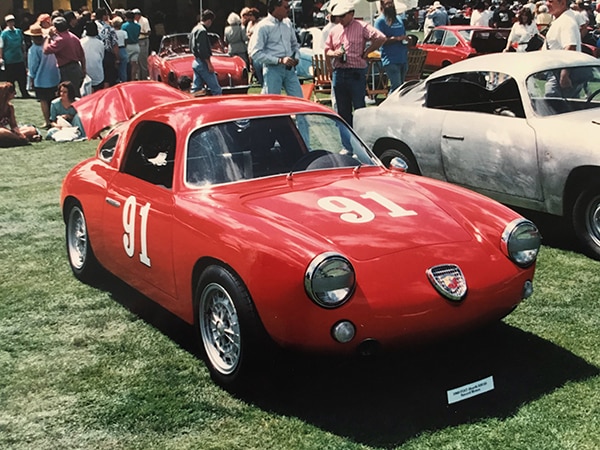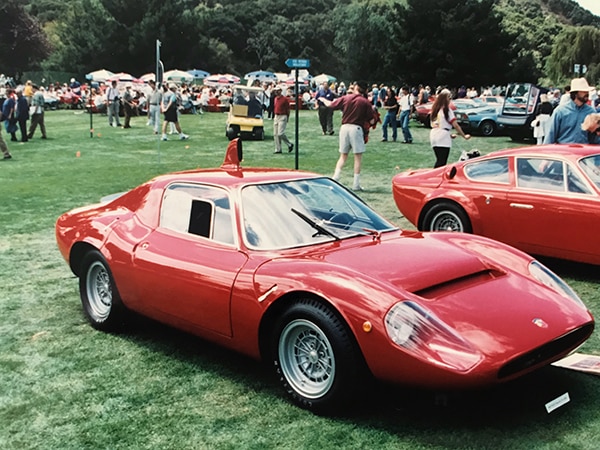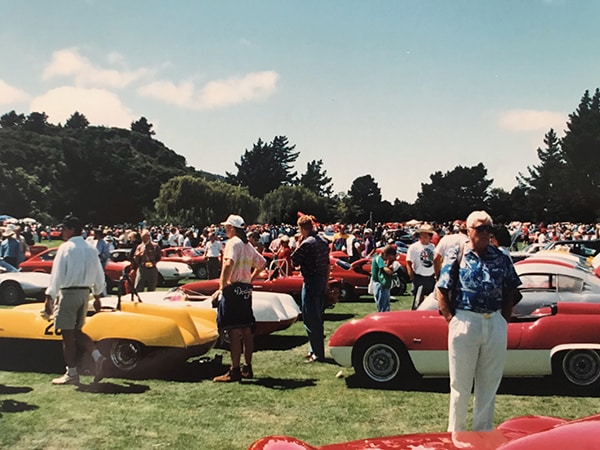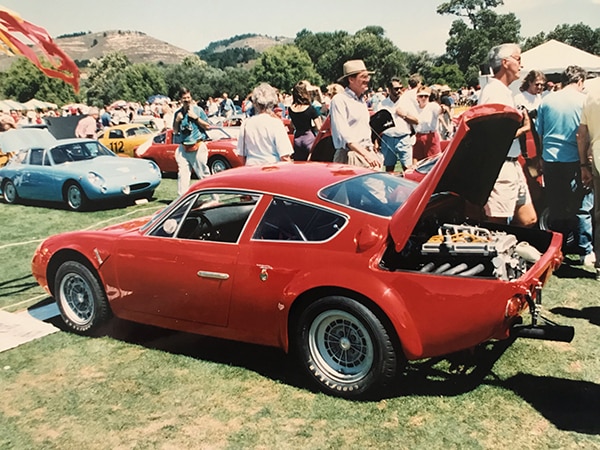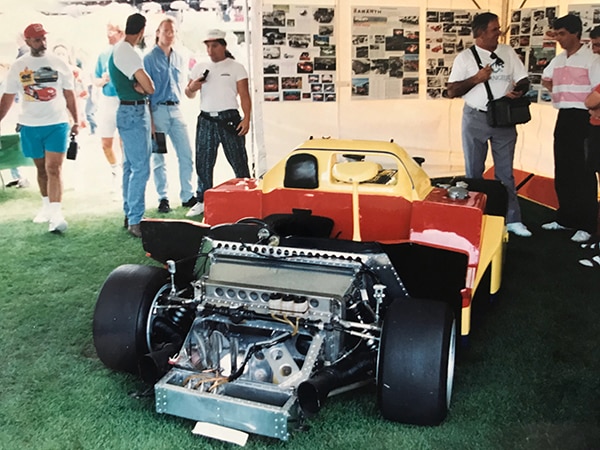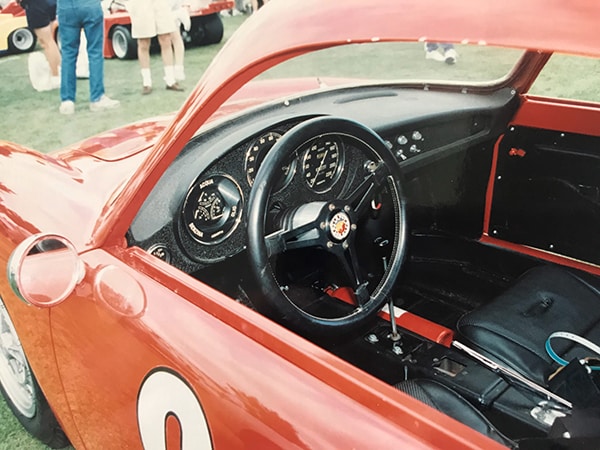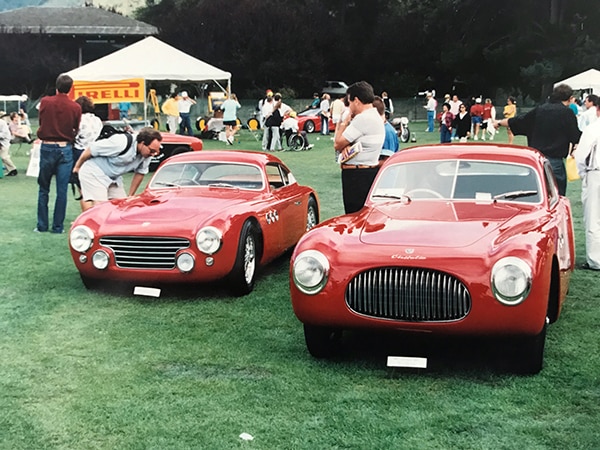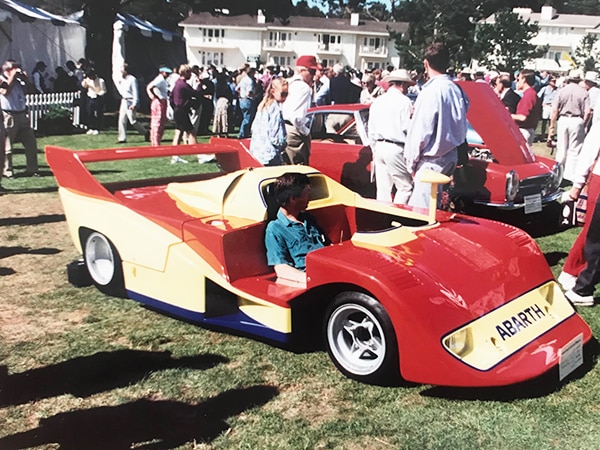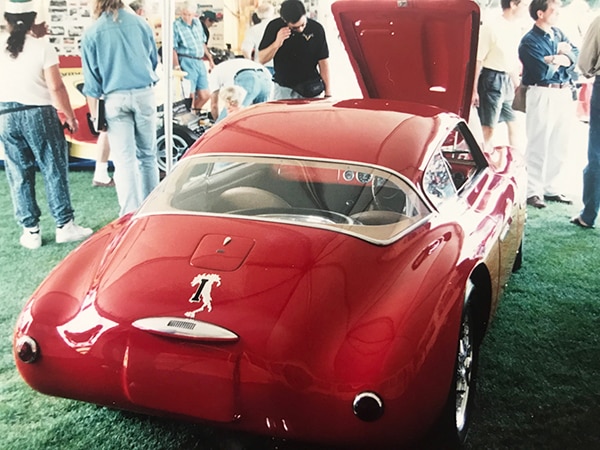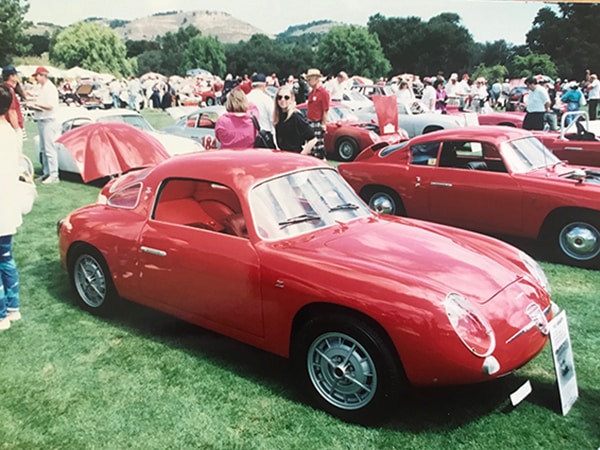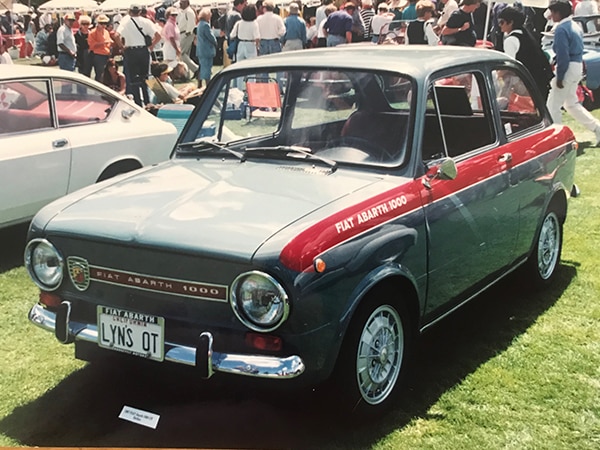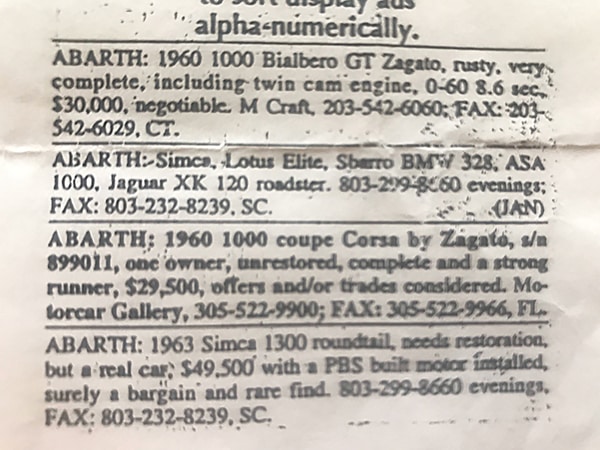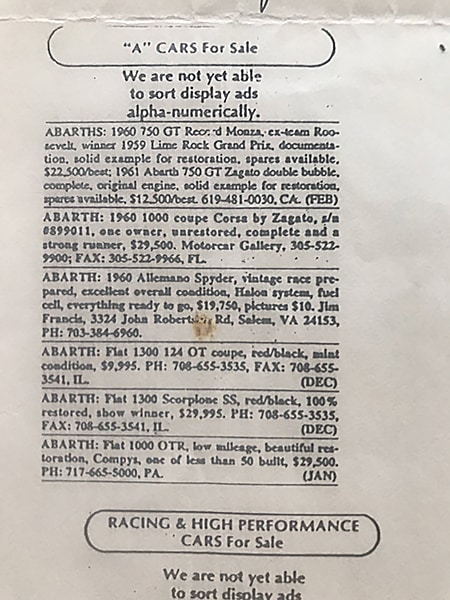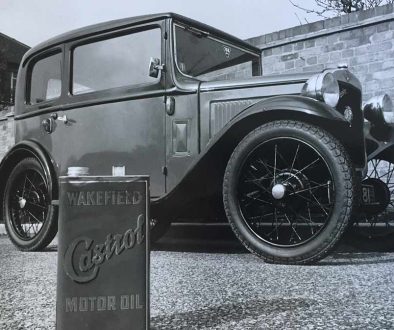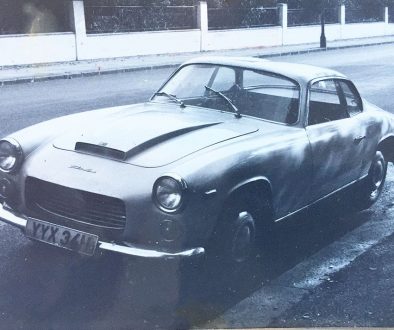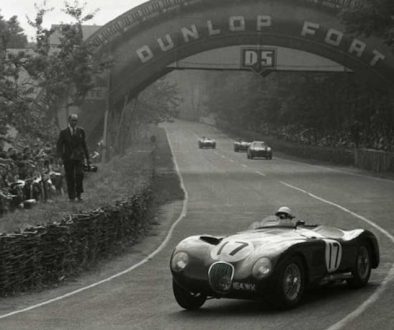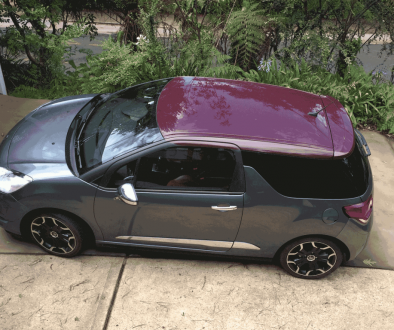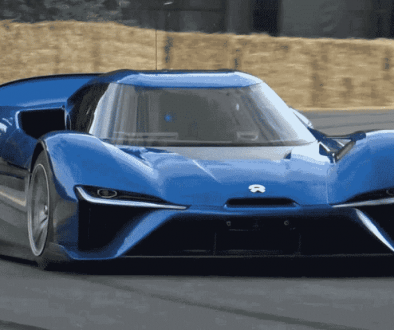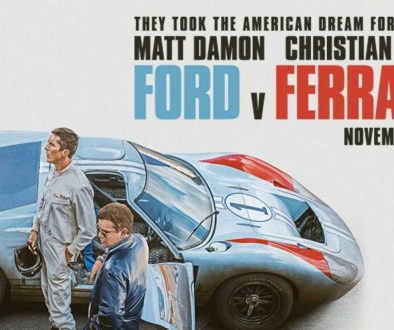Abarths – so near, yet so far
In common with most car nuts, I’m always dreaming about the cars I’ve never owned or driven. Amongst my long list of automotive heartbreakers, I’d have to say Abarth ranks high on my personal list of cars I’ve missed out on. My recent report on MotorClassica 2019, where I fell in love with an unfinished Abarth Simca 1300 coupe, reminded me that I’ve had a life-long motoring affair with the marque without actually owning one.
I did own one of the current shape Abarth-Fiat 595 Essesse models for many years. But that’s not a real Abarth. Sorry to say, it’s a fancy Fiat and, while good fun as a daily driver, it was no substitute for the amazing pint-size exotica Abarth was once most famous for. No, the Abarths I have lusted after were the original road racers. These were the cars Abarth built in small numbers throughout the 1950s, 1960s and for a short time in the 1970s until they were absorbed into the Fiat empire.
Love at first sight
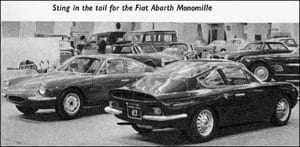
My first glance at a real Abarth was when I was a young schoolboy attending the 1962 British Motor Show at Earls Court, London with my father. As a keen collector of (free) motoring literature, I grabbed the very basic ‘brochure’ from the Abarth representative at the show and, as can be seen below, I still have it.
The Abarths on display were so far off my radar, I recall gazing at them as if they’d just landed from another planet. They made such an impression on me I wrote to the Autocar magazine and also acquired a copy of their 1957 road test of the tiny 750GT coupe which received a rave review despite costing well over 2000 pounds, a very considerable sum of money at that time. Enough to buy you at least four brand new English family saloon cars, or a decent house – no wonder I never saw an Abarth on the street back then.
While I didn’t see any Abarths on the road, a chap called Bob Barnard did race an Abarth Simca quite successfully in the UK in the sixties. I would read about the car occasionally in Autosport but never saw it myself, unfortunately.
My second sighting
A few years later, I visited the Racing Car Show at Olympia and saw my second ever real-life Abarth coupe. I can’t remember the model but do recall it had the trademark Abarth motor hanging out the back, a cast-alloy sump and large-bore exhaust pipes – irresistible. Luckily, another stand at the show was able to sell me an Abarth I could just about afford – a 1/43rd scale Solido model of an Abarth 1000. Amazingly, I still have it, along with a few more old Abarth models.
Falling in love again
My memory, such as it is, doesn’t recall any further encounters with an Abarth again until the late seventies. This was when a small army of dazzling racing cars turned up from Italy, including several Abarths for a historic car race meeting I attended at Brands Hatch in Kent, not far from my home.
For the first time, I could not only see several Abarths together I could also hear them, and watch them on the track too. Needless to say, I was mesmerised. I can’t remember how well they performed in the races because I was just blown away with seeing them at all.
At the risk of sounding corny, there is something jewel-like about them, so tiny yet with those menacing motors on display outback, and so well-proportioned you never realise how small they are until you’re standing next to them.
Race-winning beauty
While Abarths are perhaps best known for their motorsport wins and record-breaking successes, their beauty is (in my opinion) often overlooked. Not every Abarth is a visual masterpiece. Yet, right from the early days, there were a number of Abarths that would bear comparison with some of the world’s most respected design greats.
My theory is that they have usually been regarded primarily as competition cars, rather than a maker of road cars, so are often ignored for that reason. Another explanation is that they are small, and small cars never receive the same attention as large cars for some reason, even though most car designers claim it’s much harder to create a beautiful small car than a large one. Interesting.
Of course, Abarths were designed primarily to be fast and to win races, rather than to win over customers in the showroom. Nevertheless, who can deny the exquisite good looks of the classic Abarths: the early 205A Coupe surely rates alongside the iconic Cisitalia 202 coupe for its balance and simplicity, then there are the sensuous Bertone and Pininfarina-designed record breakers, the stunning, little Abarth Record Monza and 1000 coupes and, later, the sublime Colucci-designed, Abarth Simca-based coupes and exotic 2000 and 3000cc sports prototypes.
Mario Colluci – an underrated design genius

Officially, Mario Colucci was the Technical Director of Abarth, a man who seemed capable of almost anything he leant his hand too. I mean he designed everything, the body structure, suspension, the engines, gearboxes and even styled the cars, primarily to ensure their aerodynamic efficiency but somehow they always looked stunning too. Like several other competition cars of the fifties and sixties-eras (D-Type Jaguar, Lotus 11 and Elite, Alfa Romeo TZ, Ferrari GTO, P3/4, 206SP, and Porsche 904 among others), Colucci-designed Abarths demonstrated how form and function working in harmony can often produce the purest outcomes.
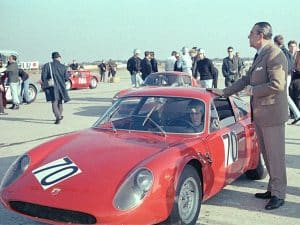
People who worked for Carlo Abarth often commented on his eye for good design and his elegant dress sense, so it’s quite possible his influence ensured that Abarths were in equal parts all about both show and go. It’s hard to know the extent of Carlo’s contribution to the Collucci-designed cars, even so, it’s hard to deny that Mario Colucci was a multi-talented design genius.
Abarth sightings in Japan
The next time I recall seeing a gathering of Abarths was when I was on a business trip to Japan in 1992. I was lucky enough to be on a photographic shoot for Jaguar Australia, working with an amazing Japanese car photographer, Komei Hanaoka. Among other things, he had photographed several books for a well-known car collector, car museum owner and publisher, Yoshiho Matsuda. I had owned several of his books and specifically sought out Hanoaka to photograph the new Jaguars in Japan (how I wangled this trip to Japan is another story I must tell on Car O’Clock someday!).
Now, it just so happened that we came upon one of Matsuda’s car museums (he owned several!) located in the mountains outside Tokyo and, being winter, it was closed to visitors. ‘No problem’, said Komei, ‘I’ll make a phone call to see what can be done.’ Amazingly, he arranged for the museum to be opened just for me the very next day! Since this was before everyone carried mobile phones with cameras, I rushed out to buy myself a cheap camera so I could take shots of the cars on display.
Thank goodness I did, because Mr Matsuda’s amazing cars included rare Ferraris, Alfa Romeos, and some sensational Abarths, a few of which can be seen from my old photographs below (somewhere, I have many more in storage). What a lucky bastard I was.
More Abarths in California
A year or two later, I paid a visit to see some of the many classic car events held near Monterey, in California. This included vintage racing at Laguna Seca, the Concours D’ Elegance at Pebble Beach and, best of all, an Abarth Register gathering at Concours Italiana.
As my photos reveal, outside of Italy, some of the best rare and exotic Abarths were in attendance that day. Everything from a beautiful early 205A coupe, little racing Berlina’s, Zagato ‘Double Bubbles,’ 1000 Monomille and Bialberos, Simca-based 1300 and 2000 models and even the last-of-the-line SEO27 2000 sports prototype, the one that never raced.
It was a truly jaw-dropping selection and a real treat for an Abarth-fancier like me. I spent the day gazing lustfully trying to decide what example I liked best, which was an impossible task. They are all exquisite and enticing in their own way.
The Abarths that got away
Around this time, I decided I just had to get myself an Abarth of my own and began to make inquiries about several Abarths that were up for sale in the USA – see several Abarths listed for sale below in Hemmings 1991, and weep. Frustratingly, my hopes were dashed at every turn, first, with a new house purchase that restricted my finances, then a job loss that really curtailed my Abarth purchase plans. In the meantime, Abarths were becoming increasingly ‘collectable.’
After that, well, my life became even more complicated with the decision to start a new business with my wife in 2000, and all the complications to stay afloat that entailed. When I did have some money spare a few years later, a Record Monza came up for sale here in Australia, for about AUS$40,000, I think. Stupidly, I dithered when I should have pounced, and it ended up being bought by an overseas purchaser for, what I now realise, was a bargain price.
Prices are steadily rising
I missed my chance. In recent years, thoughts of Abarths ownership have been put on the back-burner and, of course, the classic car boom has seen Abarth prices climb ever higher. Recently, a 750GT was sold in Australia for $125,000 – there’s no such thing as a cheap, classic Abarth anymore, dammit! And besides, I now have a lovely old air-cooled 911 that, while far more commonplace, also offers the bonus of being practical enough to drive on the street and there are expert specialists who know how to maintain it and who can obtain parts off the shelf.
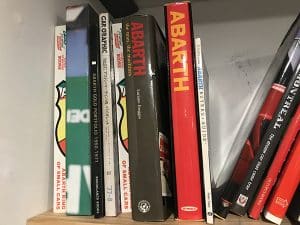
So, here I am, many years later, still tempted by the idea of owning a ‘real’ Abarth (a 750, 1000, or 1300 coupe would be on my wish-list) yet wondering if it’s all too late for me. I’ve seen them, photographed them, still own the models and have an extensive collection of Abarth books. Perhaps I’m better off just admiring them from afar, rather than having to bear the responsibility and cost of ownership.
Today, I can at least get some idea of what an Abarth is like to drive thanks to YouTube that has a number of excellent ‘onboard’ videos of some very quick Abarths competing in hill-climbs and on the track in classic car events. Like these:
https://www.youtube.com/watch?v=45zJcn6YtvI
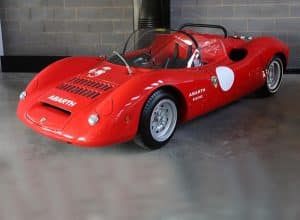
Interestingly, two Abarth Simca 2000 coupes were competing at the 2019 Goodwood Revival meeting in September, one of which qualified for the front row of the grid but didn’t race and no one seemed to have posted any footage of either car, sadly.
Another little known fact is that the famed Gordon Murray, road/race car designer, has recently added two classic Abarths to his collection, a pretty 1000 OT spider and a 2-litre sports prototype, although I’m not sure of the specific model. Lucky man.
What would I do with a classic Abarth anyway?
If I did rustle-up enough money to buy an Abarth, what on earth would I do with it? Many say they are too delicate to drive on the road, and, for me at least, too expensive to race. Show it off at a Cars and Coffee meet? Not my thing. No, I’d just be left admiring it in the garage which would be a waste. I love the idea of owning something like an Abarth Simca, yet realistically it won’t happen now unless I have an unexpected financial windfall.
Mind you, if any an owner of an original Abarth Fiat or Simca coupe would be kind enough to take me for a ride, or better still, let me have a drive, rest assured I’m primed and ready to go.

